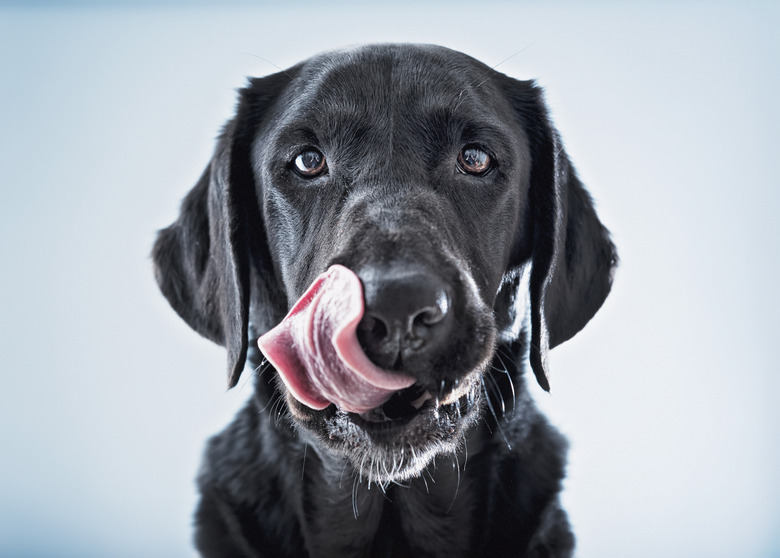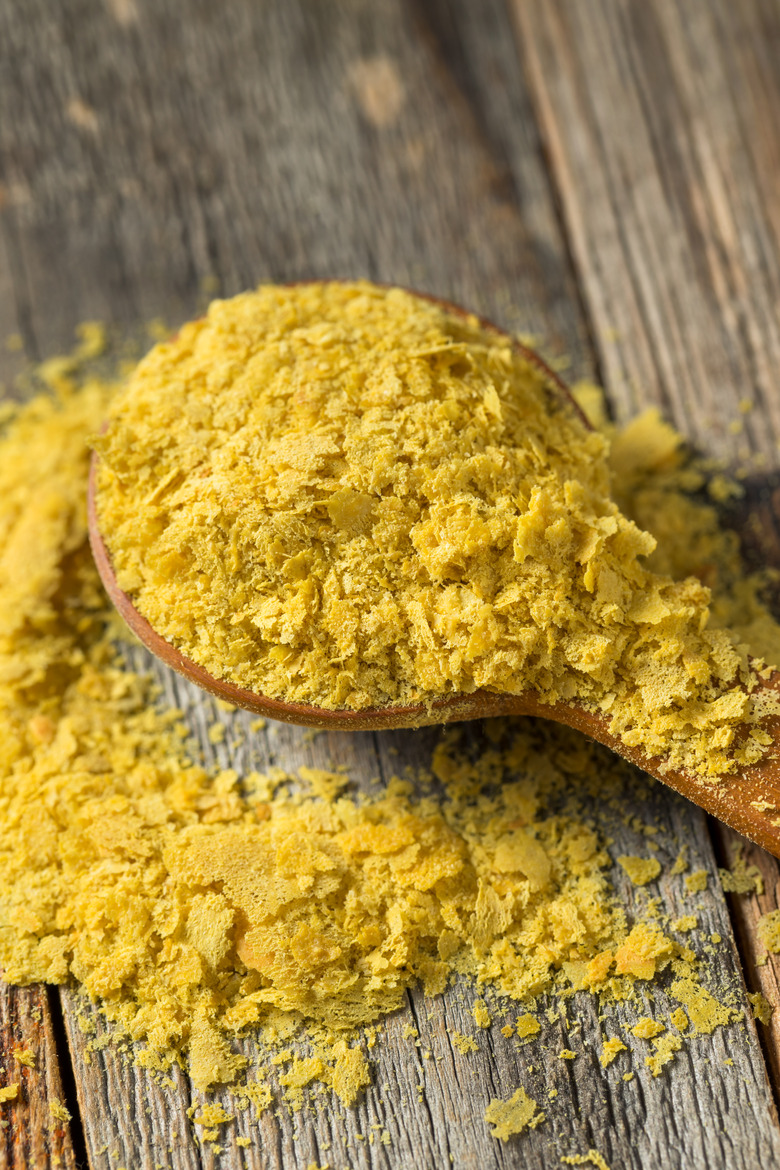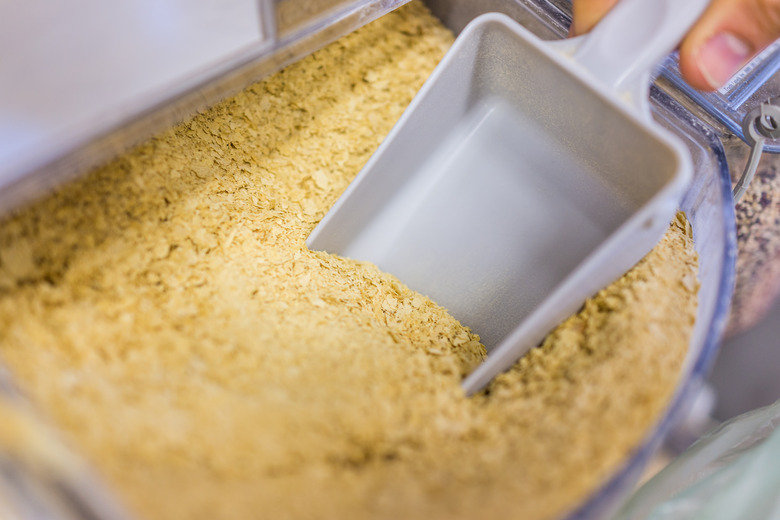Can Dogs Eat Nutritional Yeast?
Mac and cheese, nacho sauce, cheesy popcorn, fettuccine alfredo, and many other delicious comfort foods are all possible in the dairy-free diet thanks to nutritional yeast. Affectionately called "nooch" by aficionados, nutritional yeast is an inactive form of yeast made from sugarcane and beet molasses cultivated specifically for use as a dietary supplement and savory, cheese-flavored seasoning for vegetarians and vegans, but equally adored by most carnivores who dare to try it.
And the good news for pet parents...our cheese-loving dogs can enjoy nutritional yeast, too, in small quantities (never more than a teaspoon at a time regardless of the dog's size) sprinkled over kibble, incorporated into homecooked meals like polenta, or baked into tasty biscuits. But don't confuse it with brewers yeast, which has a wildly different taste although both are derived from the same fungus. Yes, yeast are single-celled microorganisms that are classified, along with molds and mushrooms, as members of the Kingdom Fungi.
Where does nutritional yeast come from?
Where does nutritional yeast come from?
Ranging in color from bright yellow to golden, gluten-free nutritional yeast is an inactive yeast with a savory, cheesy, buttery, nutty flavor. Sold in powder or flakes in most health food stores and many supermarkets, it is a versatile seasoning for many vegetarian and vegan dishes.
Derived from a species of yeast known as Saccharomyces cerevisiae, nutritional yeast is completely unlike the activated yeast that is used to leaven bread and it's different than brewers yeast with which it is sometimes confused. It is a specific yeast that is usually grown on a glucose medium like sugarcane or beet molasses and deactivated during the heating and drying process.
Nutritional yeast hit the store shelves in 1950 as Red Star Brands, and primarily due to its B12 component, became popular during the hippie era in the late 1960s and 70s when plant-based diets were catching on. The rest is history, and today, with 'meatless Mondays' gone mainstream and more and more people eating plant-based, we see a resurgence of nutritional yeast's popularity.
Can dogs eat nutritional yeast?
Can dogs eat nutritional yeast?
Yes, dogs can eat nutritional yeast! And it's more nutritious and less calorically dense than cheese. However, feed only in controlled amounts.
Are there health benefits in nutritional yeast for dogs?
Are there health benefits in nutritional yeast for dogs?
Give your dog a nutritional boost and optimize his health by adding nutritional yeast to his diet, says Modern Dog Magazine. Packed with nutrients, nutritional yeast contains all 10 amino acids. It is also rich in B vitamins, and zinc.
Always check with your vet before introducing any new foods or supplements to your dog's diet, particularly if your dog is on any medications. And, keep in mind, if your dog has chronic health issues, his nutrient needs can be vastly different from a normal, healthy dog.
The best ways to feed nutritional yeast to dogs
The best ways to feed nutritional yeast to dogs
Appetite booster
Is your dog a fussy eater with a poor appetite? Sprinkle a little nutritional yeast on her food to punch up the flavor and watch her dig in.
Healthy powder
Developed by veterinarian Dr. Richard Pitcairn, the following recipe makes a healthy blend of natural supplements you can add to your dog's food whether homemade or commercial:
- 2 cups nutritional yeast
- 1 cup lecithin granules
- 1/4 cup kelp powder
- 1/4 teaspoon sodium ascorbate
Thoroughly mix all the ingredients together and store in a jar or plastic bag in the refrigerator or freezer. Add 1 to 2 teaspoons to either kibble or a homecooked meal once a day for small dogs, 2 to 3 teaspoons per day for medium-sized dogs, and 1 to 2 tablespoons per day for large dogs.
Polenta
Yummy polenta is simply boiled cornmeal that is either spread in a sheet pan or poured into a loaf pan and allowed to cool and solidify, then cut into slices or squares that can be fried, baked, or grilled. When preparing polenta for dogs, you can stir in a little nutritional yeast and cut up veggies like carrots or zucchini and pour into a sheet pan. No need to cook further, simply cut into squares when cool, and serve.
Cheesy nutritious dog cookies
You can easily whip up cheesy dog cookies for your pooch with a few simple ingredients including nutritional yeast and a versatile dog treat recipe like the one at Wiggleworthy.com, that you can adapt to your liking using a proven formula:
- 2 cups of flour
- 1/2 cup of dry ingredients
- 1/2 cup of wet ingredients
- 1 /2 to 3/4 cup liquid (amount needed will vary with each recipe)
- 1 egg (or an egg substitute) plus optional ingredients if desired
Or, you can check out the healthy treats made by Because Animals, who craft meatless, human-grade dog treats using responsibly-sourced ingredients without any fillers, coloring agents, or artificial preservatives. Called "Noochies," for the star ingredient, nutritional yeast, these dog cookies also contain peanuts, whole barley flour, bananas, apple sauce, flaxseed, and coconut all, all of which are organic.
Are there any concerns with feeding nutritional yeast to dogs?
Are there any concerns with feeding nutritional yeast to dogs?
Nutritional yeast can be fed to dogs because the yeast is inactive. Dogs should never eat active yeast, which will cause gastrointestinal upset. And don't confuse nutritional yeast with brewers yeast; they are different in flavor and nutrient profile.
Nutritional yeast should only be fed to dogs in controlled amounts and never more than a teaspoon at a time regardless of the size of your dog.
Conclusion
Conclusion
Dogs can eat nutritional yeast and it's good for them, too. It can be incorporated into home-cooked or commercial dog foods and dog treats. However, nutritional yeast should only be fed in controlled portions and never more than one teaspoon at a time for any size dog.
Along with many other "people foods," nutritional yeast can be a healthy part of your dog's diet. For more dog food ideas, check out our comprehensive list of everything dogs can and cannot eat!
Always check with your veterinarian before changing your pet's diet, medication, or physical activity routines. This information is not a substitute for a vet's opinion.
References
- Huffington Post: Nutritional Yeast
- Modern Dog Magazine: Spice Up Your Dog's Life
- Autumn Damask: Can Dogs EAt Nutritional Yeast
- Mother Earth Living: Healthy Powder Recipe
- Because Animals: Why We Love Nutritional Yeast for Dogs
- Drugs: Folic Acid
- NPR: How a Little Science and a Lot of Shady Advertising Boosted Yeast's Popularity
- Harvard Medical School: List of B12 Foods
- Because Animals: Noochie Ingredients


